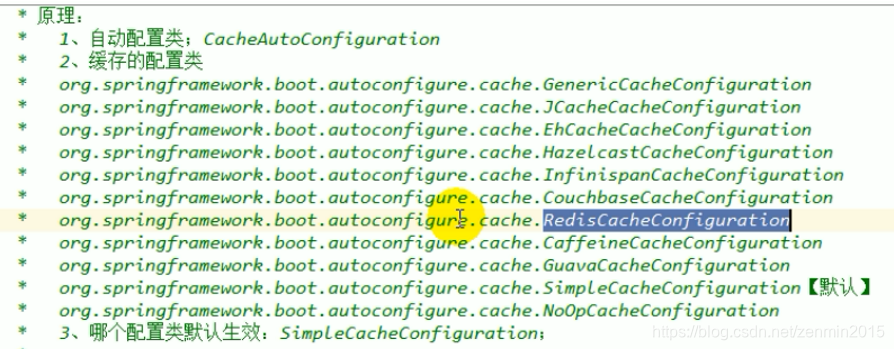前言
SpringBoot为我们自动配置了许多组件,当然缓存也是必不可少的。在SpringBoot中我们使用缓存只需要简单的写注解即可 这里我只讲讲如何使用 感兴趣的朋友可以看下源码 org.springframework.boot.autoconfigure.cache
1、使用
/**
*Cacheable属性
*cacheNames/value:缓存组件名字CacheManager管理的多个Cache
*key:Cache的key
*keyGenerator:ket的生成器,可以自己定义key的id
*cacheManager:指定缓存管理器
*condition:指定条件符合条件在缓存
*unless:否定缓存当unless指定的条件=true就不会缓存还可以根据结果进行缓存
*sync:是否使用异步模式
*
*SpringcCache默认cachemanager是ConCurrentMapCacheManager 默认cache是ConCurrentMapCache
*
*过程:
*默认使用方法参数的值作为key去从Cache中取没有就执行方法然后缓存有就直接返回缓存
*@return
*/
//查询全部
@Cacheable(cacheNames="emps")
public List<Employee> getAllEmp(String args){
return employeeMapper.selectByExample(null);
}
//按id查询
@Cacheable(cacheNames="emps",key="#id",condition="#id>0")//id大于0才缓存j结果不为空才缓存
public Employee getEmpByid(Integer id){
return employeeMapper.selectByPrimaryKey(id);
}
//更新
@CachePut(value="emps",key="#employee.id")//方法执行完成后更新emps中key为employee.id的数据
public Employe eupdateByid(Employee employee){
employeeMapper.updateByPrimaryKey(employee);
return employee;
}
/**
*方法执行后清除缓存key默认是参数
*beforeInvocation:缓存清除是否在方法执行之前执行如=true如果当前方法出异常不管方法是否出错都会执行清除
*@paramid
*/
//删除
@CacheEvict(value="emps",key="#id"/*,allEntries=true*/)//allEntries=true*删除所有缓存
public int delEmployee(Integerid){
int i = employeeMapper.deleteByPrimaryKey(id);
returni;
}
|
@Caching |
//指定多个cacheAble 和put、CacheEvict |

2、配置顺序加载

补充:
2、定义多个CacheManager时
@Parimary指定主要CacheManager
@Qualifier("xxxCacheManager")只使用这个CacheManager







 SpringBoot自动配置了许多组件,缓存是其中之一。在SpringBoot中使用缓存只需简单写注解。文章介绍了缓存的使用及配置顺序加载,还补充了定义多个CacheManager时,可通过@Parimary指定主要的,用@Qualifier指定使用的CacheManager。
SpringBoot自动配置了许多组件,缓存是其中之一。在SpringBoot中使用缓存只需简单写注解。文章介绍了缓存的使用及配置顺序加载,还补充了定义多个CacheManager时,可通过@Parimary指定主要的,用@Qualifier指定使用的CacheManager。

















 被折叠的 条评论
为什么被折叠?
被折叠的 条评论
为什么被折叠?








